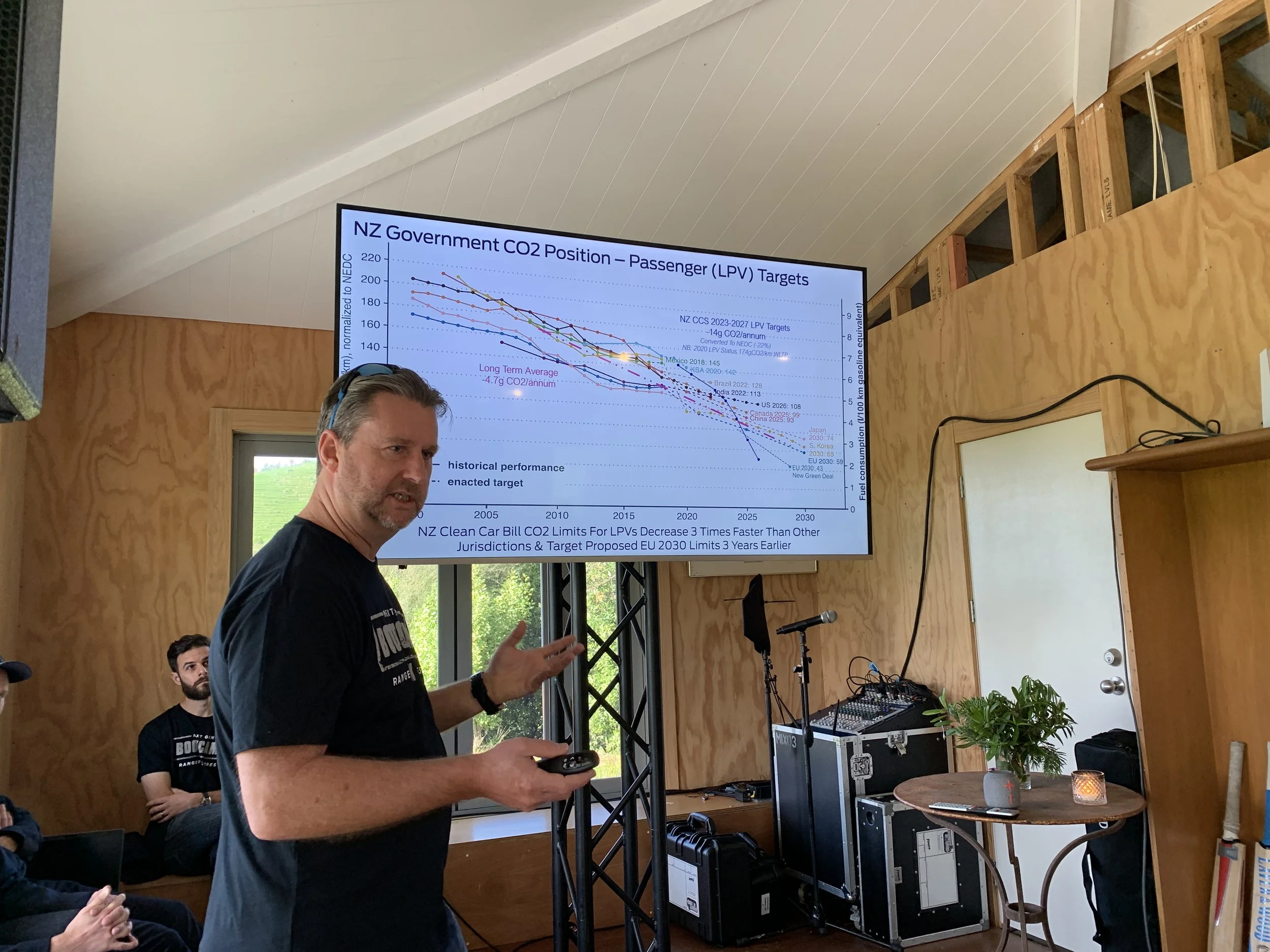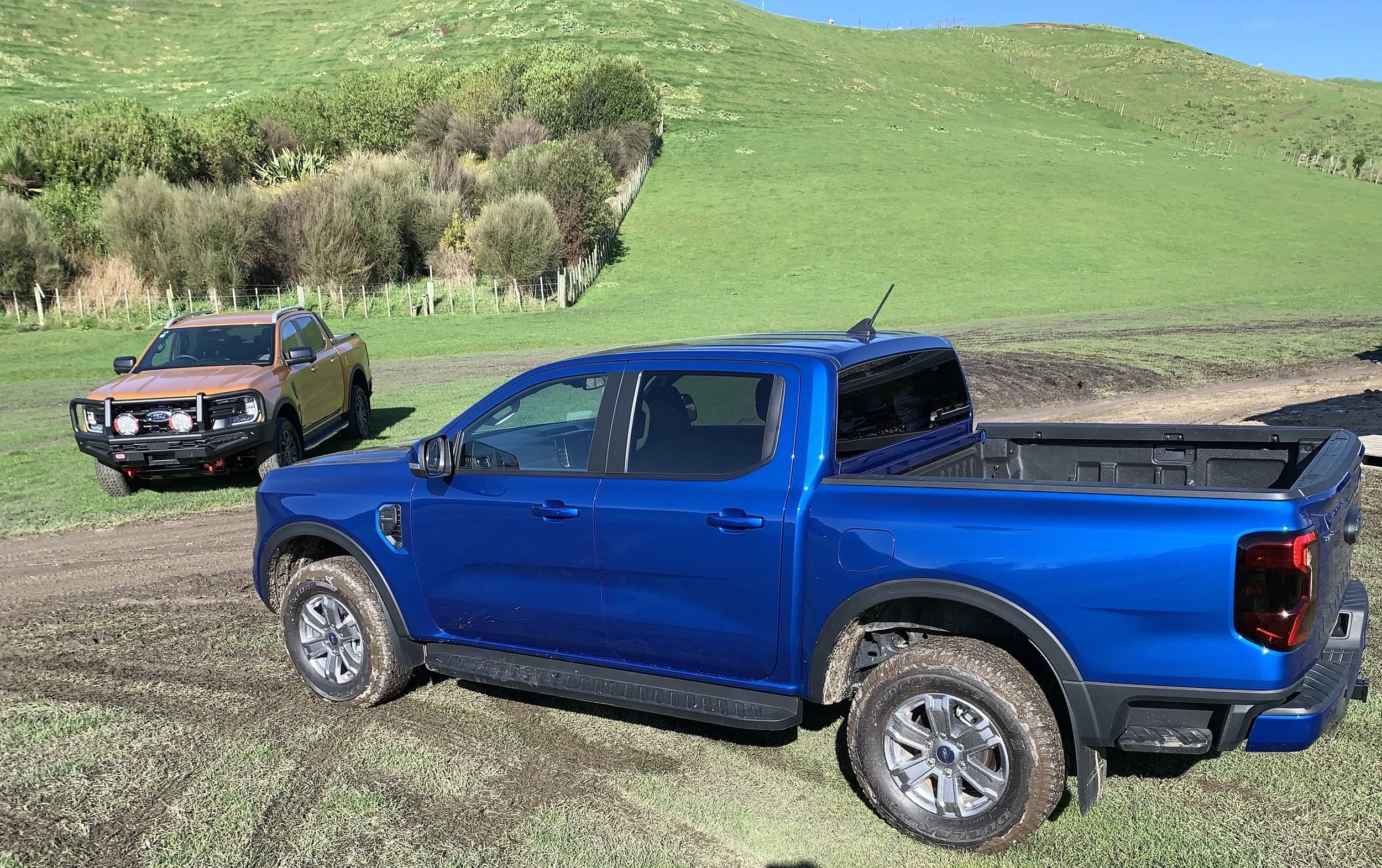Euro EV to Ford NZ’s rescue?
/VW co-share car could be on roster as Blue Oval looks to constrain CO2.
ELECTRIC passenger product on a platform underpinning a host of Volkswagen Group models here from next year could help Ford New Zealand reach an emissions target.
This from the Blue Oval operation’s national managing director, Simon Rutherford (above), in discussing ramification of the next phase of Government’s emissions reduction strategy in respect to newly registered light vehicles.
Presently NZ understands Clean Car as a system that rewards buyers of low emissions – meaning, in the main, battery-involved cars and particularly fully electric models – and penalises high emissions product (meaning anything outputting more than 192 grams of CO2).
From January 1 vehicle distributors are also being hit in the pocket. The Clean Car Standard introducing then expects brands to meet average CO2 targets across the vehicles they sell, or pay fines that increasingly worsen over the next few years. With the Standard, it’s not just what models are sold, but how many.
Ford NZ is starting to introduce low emissions passenger cars in hybrid and plug-in hybrid and will next year add two wholly electric models, the Mustang Mach-E crossover and a version of the Transit van, in two formats. These will help pull down the average. But are they enough?
Ford has at least one more electric passenger model in development, conceived through a deal with Volkswagen – its partner on the Ranger programme.
Based on the VW MEB platform underpinning Audi, Skoda, VW, Cupra and Porsche cars signed up for NZ sale, some from next year, the Blue Oval product is supposedly restricted to availability in Europe. But maybe not any more.
When asked if the as yet unseen car - or cars, no-one knows yet - could play a part in Ford NZ’s strategy to earn Green credits and avoid penalties, Rutherford suggested that couldn’t be discounted, reminding that his passenger line-up now was effectively the same that Ford offered on the Continent.
“We’re always looking at the cycle plan.
“We’re very fortunate that we have Ford of Europe, they are a close ally. If you look at our passenger offering now – and you look at Europe’s passenger offering – they’re not too far apart.
“While I cannot confirm anything today, my view is that we would always be looking at what they are doing. We are effectively on the same regime, we are bed partners.
“I am so pleased they are doing what they are doing with Transit; it’s a massive opportunity for us.”
Ford NZ’s big challenge under the Clean Car Standard is to reach a satisfactory CO2 goal without hurting its biggest seller, the Ranger utility, which is a high CO2 emitter – moreso now than previously because the family has two 3.0-litre V6s, one in diesel and the other in petrol - and yet also a sales hit; expected to achieve 60 percent of the brand’s business in 2023.
Every version of the new line introducing now in diesel form is over the 192g/km limit; the Raptor coming in Spetember/October the worst culprit.
Buyers cop penalties of between $1438 (for a $56,990 2.0-litre biturbo XLT doublecab, which emits 211g/km) right up to $5175 for $89,990 Raptor, whose twin turbo 3.0-litre V6 pumps out 292g/km. The most popular engine on order, a 3.0-litre V6, emits 254g/km, so is hit by a $3910 penalty.
In speaking about the Standard at yesterday’s Ranger media event, Rutherford asserted Ford is serious about achieving Clean Car compliance. It’s a global Ford directive.
He also cited expectation of maintaining Ranger as a “core” product here.
In time, the utility will join the electric side of the family – primarily in PHEV form, though a full electric might also be coming. But even when that happens, many if not all of wholly fossil fuel-reliant powertrains here now will likely remain.
Beyond that, there’s need to carefully manage Ranger sales. Not easy. The last not only dominated its category but, in some years, was the country’s top-selling new passenger vehicle. The order bank for the new one is already close to half of its 2021 tally, when it was NZ No.1.
Rutherford is confident; he says he has a plan.
“We’ve done the homework out to 2031 … we will proportionally reduce on Ranger as we get some of the other products in, but it will still be our core vehicle. As we look to the future, we still expect it to continue to be our core product.”
Arrival from now of the Puma and Focus mild hybrids, and an Escape hybrid to join the PHEV model this year – at expense of the petrol-only Escape, which will be dropped – is helping. Mach-E will arrive in the second quarter of 2023. What the supply level will be like is still being sorted.
Rutherford was asked if Ford NZ will nonetheless feel compelled to put Ranger prices up from next year because of the standard.
“We don’t know to what degree the Clean Car Discount/fee is really going to impact the segment. We’d be stupid to think it wasn’t going to affect it, but (the situation) hasn’t settled enough between us, the supply constraints and our competitors to really see where that segment is going.
“What we know is that for the first couple of years, the slope of the (Clean Car Standard) curve isn’t too painful. But then it is.”


















